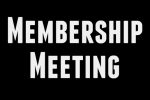A must-read
The newsonomics of Advance’s advancing strategy and its Achilles’ heel | Nieman Journalism Lab
In this piece, Ken Doctor examines Advance Publications’ digital-first strategy in depth. It’s a strategy John Paton has tacitly endorsed (if for no other reason than Advance is at least trying to find a new business model), so it’s worth a read.
Here are some excerpts to whet your appetite:
Last week, Oregon’s dominant paper, The Oregonian, followed in the footsteps of other Advance papers and announced it would be delivering to homes only four days a week come fall. It will be greatly slimming down staff, including dozens in the newsrooms, formally going digital-first, reorganizing into two companies, and producing newsstand editions on the days it won’t home deliver.
Reading the same tea leaves of print decline as their brethren, they decided that blowing up the enterprise (reassembling it in two pieces) and downsizing their operations, their home delivery, and their community service was the answer.
Their analysis, curiously, parallels that of iconoclast John Paton, the mastermind behind Digital First Media, as Journal Register and now MediaNews properties experience their own more evolutionary revolution. The in-common belief: As print ad revenues show accelerated decline, companies must greatly reduce their legacy costs and concentrate on the digital future. In fact, Paton has somewhat endorsed Advance’s efforts.
Advance’s model:
- Massively cut expenses
- Pixelate the remaining ink-stained wretches
- Separate out the old business from the new
- Provide seven-day, but not home delivery
- Keep digital access free — at least for now
Stand back from this audacious strategy — with all its staff-cutting pain, its inducing of reader pain, and the promise of its digital-first, future-is-now thinking — and it’s hard to get past the point of its missing digital reader revenue strategy.
That said, Advance’s more immediate bet is that it can radically reduce its costs and maintain its dominating presence in local news and commerce.
Times-Picayune editor Jim Amoss believes he is already seeing the dividends from the wrenching change the newsroom has seen. His staff is thinking news, not the next day’s paper.
“We’ve had eight months of having the news gatherers and editors separate, physically separate, from the print team and not having to think about the print product. The new rhythms have been inculcated in everybody,” says Amoss.
Further digital skills may have trumped journalistic skills in such Sophie’s Choice decision-making. Finally, The Oregonian — as keenly aware of its newsroom dollar budget as of its actual headcount — cut many high-salaried people, as well as some younger staffers, weighing, I’m sure, one more factor: exposure to age discrimination suits, as any employer in such a situation would do.
It’s not just news-gathering and writing that matters on the web, of course. A digital-first news operation should be the go-to news aggregator for the region; The Oregonian isn’t. It should have the best tablet and smartphone apps — news and entertainment — and its offerings so far are nothing special, open to competition.
There’s little doubt that most of Advance’s employees — whose work will make or break the strategy — have little confidence in the “the plan.” It’s paternalism gone awry, and the sense of abandonment is clear.
There’s a P.S. to this story, too, in which Advance’s latest proposal during bargaining at the Newark Star-Ledger demands a 55 percent wage and benefits cut from employees or it will shut down the paper.






